 Tavleen Singh’s widely shared opinion piece in the Indian Express titled Fifth column: Political pundits. Really? carried the byline that prominently quoted from the article declaring that:
Tavleen Singh’s widely shared opinion piece in the Indian Express titled Fifth column: Political pundits. Really? carried the byline that prominently quoted from the article declaring that:
“In Gujarat in 2002, both Hindus and Muslims died, but we called it a pogrom and the demonisation of Narendra Modi began.”
She started by pointing out that the ‘political pundits’ — whatever that means, but she counts herself among them — have been “more resoundingly defeated” than anybody else in the 2017 Uttar Pradesh elections perhaps because their predictions proved incorrect.
To begin with, her outrage at predictive failure is both badly misplaced and hugely exaggerated because it happens all time for well understood reasons, principal among which is that voters do not always disclose their real electoral preferences, which is how it should be because, after all, it is election by ‘secret ballot’. For a long time now politics in India has been in too vigorous a flow for any ‘political pundit’ to be able to accurately judge the outcome of nearly any given election, let alone by India’s largest electorate.
For instance, BJP lost the UP election in 1993 in the wake of the Babri Masjid demolition when the party, riding on the high horse of Hindutva was, by all accounts, in nearly undefeatable position, and should have effortlessly bagged the elections because the Hindutva wave had supposedly swept the entire state. Didn’t happen. And the ‘political pundits’ were proved just as wrong — if not a lot more wrong — than in the 2017 elections. The ‘political pundits’ were just as completely wrong in the 2002 Gujarat elections as well.
So, what is Ms. Singh surprised at is beyond me because elections in India have been unpredictable more often than they have been predictable at least in the past few decades since 1990, particularly in Uttar Pradesh. But that is not the thrust of this piece. Ms. Singh turns around quickly and, instead of finding the causes, starts inventing them by mixing the real with the fact-fiction mixture readily available, and then adds to it a considerable amount of misinformation and loaded suggestions to simplistically conclude that ‘political pundits’ made mountains of the molehills while people drew their wise conclusions to bring BJP to power, which was almost like re-bringing Modi to power. The all-wise UP electorate has uttered the word of god, and in the light of the electoral mandate in UP, the ‘demonization’ of Mr. Modi was wrong right from the start regardless of the facts.
Ms. Singh goes on to suggest that since both Hindus and Muslims died in Gujarat in 2002, it was not ‘pogrom’ and because only Sikhs were killed in 1984 riots, it was “a real pogrom” and the expression ‘anti-sikh riots’ is for that reason a misapplication.
The expression ‘anti-Sikh’ means ‘against the Sikhs’, and if a riot is against only one community or ethnic group, it is by definition a ‘pogrom’. So, ‘anti-Sikh riots’ literally means a ‘pogrom’. In fact, the expression ‘anti-Sikh riots’ is actually a lot more specific than the expression ‘pogrom’. At the risk of over-simplification, the expression is not ‘Hindu-Sikh riots’, which is when it would have a different meaning than ‘pogrom’. Hindu-Muslim riots are not the same thing as ‘anti-Muslim pogrom’ or ‘anti-Muslim riots’. One could just as well call the Gujarat 2002 pogrom ‘anti-Muslims riots’ without any change or dilution of meaning. The two expressions, therefore, are semantically identical. However, Ms. Singh’s distinction is not only semantically meaningless, but is also simply false because the ‘anti-Sikh riots’ are in fact referred to as ‘anti-Sikh pogrom’ also. Khushwant Singh insisted that it was a ‘pogrom’, a BBC report titled ‘Indira Gandhi’s death remembered‘ refers to the riots as a ‘pogrom’, and there is a book titled ‘Betrayed by the State: The Anti-Sikh Pogrom of 1984‘ [Grewal, Jyoti, 2007, Penguin India, ISBN-10: 0143063030, ISBN-13: 978-0143063032], which, quite obviously, calls the riots a pogrom, as the title makes amply clear.
The assertion that in 2002 “both Hindus and Muslims died” for the purpose of suggesting that it was a Hindu-Muslim riot rather than an anti-Muslim pogrom is nothing short of a deliberate and mischievous gloss over because while the government did report to the Parliament that 790 Muslims and 254 Hindus were killed in the riots, it remains unclear as to how the 254 deaths were caused because no mob clashes were reported, and hardly any incident of Muslim mobs raiding Hindu houses was reported either whereas organized violence against Muslims was widely reported. One can only speculate that some of the 254 dead might have suffered lethal injuries rioting, and some might have died from the acts of self-defense when those attacked tried to defend themselves in whatever way they could. But, yes, though it stems from the fact that no incidents of organized violence or mob clashes between Hindus and Muslims were reported, it is still speculation. The point, however, is that except for the number given by the government, there is little to back the suggestion that there were violent clashes between the members of the two communities, which is principally the reason why the scholars have not bought the official classification of Gujarat 2002 riots as a “communalist riot” and have chosen to describe the violent events of 2002 as part of a pogrom. We all know that bare statistics, unless duly contextualized, do not tell the complete story. In fact, out of context, numbers can be quite misleading.
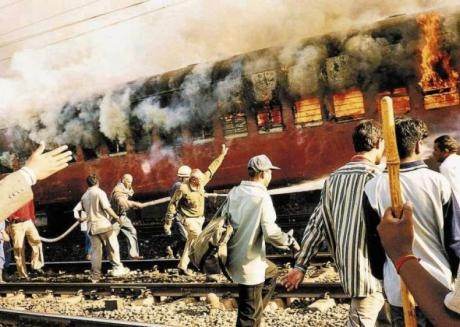 If Ms. Singh wishes to bring the Godhra incident into the picture for her purposes, it doesn’t work either because Godhra incident was a trigger and was not part of what is called the ‘Gujarat 2002 pogrom’ or simply ‘Gujarat 2002’, which is also because it was not a case of communal rioting at all, but was found to be a well thought out conspiracy, for which 31 were convicted, out of which 11 were sentenced to death and 20 got a life term. Even the official press release issued on the evening of February 27, 2002, by the Gujarat government called the Godhra incident a “preplanned inhuman collective violent act of terrorism”, and The Prevention of Terrorism Ordinance was initially invoked against the accused but they were never charged under POTA, when the ordinance became an Act, after the POTA review commission decided not to charge the accused under the Act in May 2005. So, there is no way Godhra incident can be clubbed with Gujarat 2002 riots though it was certainly the trigger, but it was not a communal riot. The Gujarat pogrom is the carnage that took place in the wake of the Godhra incident.
If Ms. Singh wishes to bring the Godhra incident into the picture for her purposes, it doesn’t work either because Godhra incident was a trigger and was not part of what is called the ‘Gujarat 2002 pogrom’ or simply ‘Gujarat 2002’, which is also because it was not a case of communal rioting at all, but was found to be a well thought out conspiracy, for which 31 were convicted, out of which 11 were sentenced to death and 20 got a life term. Even the official press release issued on the evening of February 27, 2002, by the Gujarat government called the Godhra incident a “preplanned inhuman collective violent act of terrorism”, and The Prevention of Terrorism Ordinance was initially invoked against the accused but they were never charged under POTA, when the ordinance became an Act, after the POTA review commission decided not to charge the accused under the Act in May 2005. So, there is no way Godhra incident can be clubbed with Gujarat 2002 riots though it was certainly the trigger, but it was not a communal riot. The Gujarat pogrom is the carnage that took place in the wake of the Godhra incident.
However, the numbers don’t really matter because this is not about which of the two communities lost more people. Communal riots are not new in India and there have been numerous others, but what sets apart the 1984 and the 2002 riots from other communal clashes is the complicity of the state. Not being able to prevent loss of life and damage to property during the riots is one thing, but allowing it to happen is quite another, even if we ignore the allegations of active assistance to the rioters by the state machinery. This is not to say that failure to prevent loss of life during such circumstances is somehow excusable. It clearly is not, but in terms of accountability it is better placed compared to a willful abdication of duty.
Ms. Singh goes a step further and hauls the media into the docks for joining hands in ‘demonizing’ Mr. Modi for reasons best known to Ms. Singh. She writes:
“The Indian media’s demonisation of Modi was so effective that leaders of important countries treated him as if he were the first Indian politician responsible for organised ethnic violence.”
In another dishonest gloss over, which is more blatant than clever, Ms. Singh reduces Mr. Modi to a mere politician to sneak him out of accountability. And she makes it sound like it is alright for a “politician” to be “responsible for organised ethnic violence” so long as he or she is not the first. Well, it is certainly not okay to incite violence of any kind. Besides, Mr. Modi was not just a politician in 2002, he was the Chief Minister of Gujarat. He was not the Chief Minister of a part of Gujarat or of a section or class of people in Gujarat. He was the Chief Minister of the whole of Gujarat, and that’s where the accountability rises because in acting as the Chief Minister, Mr. Modi was acting as ‘state’ (not in the sense of ‘State of Gujarat’ but in the sense of a ‘sovereign political entity’). So, what he did in his official capacity as the Chief Minister of Gujarat is attributable to the ‘state’. A ‘politician’ is a nobody trying to be somebody whereas a Chief Minister is a Constitutional functionary with sworn allegiance to the Constitution of India. He could not do a lot as a mere politician than he could as a Chief Minister, but he could, on the other hand, get away with a lot more as a politician than he could as a Chief Minister. With power comes accountability, or so it should be. But perhaps accountability has many twisted versions to it as well, for the accountable might choose who they want to be accountable to, in which case the responsibility shifts from the accountable to those who the accountable seek to be accountable to unless the shift of accountability is blocked by way of clear and unambiguous political distancing.
THE MEETING, MURDER AND FAKE ENCOUNTERS
The Godhra train incident took place on the morning of February 27, 2002. Whatever confusions might have been there regarding the cause and perpetrators of the tragedy, there couldn’t be any misgivings about the potential of the incident to spark off communal riots, given the long history of communal violence in Gujarat. The first response of the government in such a situation would be to mobilize the forces — both police and paramilitary — to take care of the possible unrest with the army on a ready standby. An effective government with reasonable foresight and an authoritative leadership, which the Gujarat Government did have back then by all estimations, would get down to the business of maintaining law and order right away.
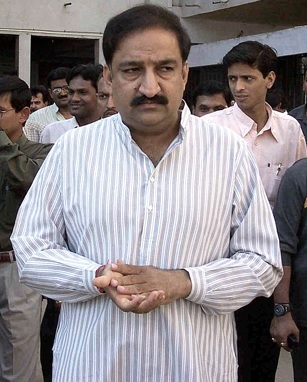 Haren Pandya, the then Revenue Minister in the Narendra Modi government, told Outlook (June 3, 2002) that Mr. Modi had a meeting on the night of February 27, 2002, at his official bungalow in which he specifically instructed bureaucrats and senior police officers, including Ahmedabad police commissioner P.C. Pande, to allow “people to vent their frustration and not come in the way of the Hindu backlash” [A Midnight Meeting On Feb 27 And A Murdered Minister, Outlook, November 12, 2007]. Outlook published the news report without naming Heren Pandya as the source of the story, though the report did mention that it was indeed a “minister” who had made the shocking revelation. Mr. Pandya spoke to Outlook once again on August 19, 2002, and this interview was duly taped by the magazine. Mr. Pandya pleaded, “Don’t disclose my identity even verbally. My name should not be quoted in any story, not even as minister or BJP leader. If you write BJP leader, I will die. If you write minister, even then I will die” [A Midnight Meeting On Feb 27 And A Murdered Minister, Outlook, November 12, 2007].
Haren Pandya, the then Revenue Minister in the Narendra Modi government, told Outlook (June 3, 2002) that Mr. Modi had a meeting on the night of February 27, 2002, at his official bungalow in which he specifically instructed bureaucrats and senior police officers, including Ahmedabad police commissioner P.C. Pande, to allow “people to vent their frustration and not come in the way of the Hindu backlash” [A Midnight Meeting On Feb 27 And A Murdered Minister, Outlook, November 12, 2007]. Outlook published the news report without naming Heren Pandya as the source of the story, though the report did mention that it was indeed a “minister” who had made the shocking revelation. Mr. Pandya spoke to Outlook once again on August 19, 2002, and this interview was duly taped by the magazine. Mr. Pandya pleaded, “Don’t disclose my identity even verbally. My name should not be quoted in any story, not even as minister or BJP leader. If you write BJP leader, I will die. If you write minister, even then I will die” [A Midnight Meeting On Feb 27 And A Murdered Minister, Outlook, November 12, 2007].
Mr. Pandya also testified before The Concerned Citizens Tribunal on 2002 Gujarat riots, and the report of the Tribunal noted:
“The tribunal received direct information through a testimony from a highly placed source of a meeting (on February 27, 2002) where the CM, two or three senior cabinet colleagues, the Ahmedabad police commissioner and an IG police were present. The meeting had a singular purpose: the senior-most police officials were told that they should expect a “Hindu reaction” after Godhra. They were also told they should not do anything to contain this reaction.”
On 26 March 2003, at about 7.40 in the morning, Mr. Pandya was shot dead by two unidentified assailants. He was shot five times after he had finished his morning walk in the Law Gardens in Ahmedabad. He kept lying in his car for two hours. The dead body was found in his Maruti 800, and he had been allegedly killed sitting in the car. One of the five bullet wounds indicated the point of entry to be the scrotum, which is nearly impossible if Mr. Pandya was shot sitting in the car. The prosecution failed to explain the injury among many other things, which resulted in the acquittal of the accused.
Mr. Pandya’s father maintained to his last breath that his son had been killed by his political opponents. However, Mr. Pandya’s wife has been a little more cautious. [Haren Pandya’s father had blamed PM Modi for his murder, now his wife accepts key Gujarat post].
According to a newsreport published by DNA (Daily News & Analysis) titled ‘Was it Tulsiram Prajapati who killed Haren Pandya?‘, which cited ‘sources in state police’, Hiren Pandya was killed by Tulsiram Prajapati, but it was Sohrabuddin who was assigned the task of eliminating Pandya “by some influential people”. Sohrabuddin first contacted Asgar Ali for the job but Ali refused, after which Sohrabuddin handed over the task to Tulsi Prajapati, who executed the killing. In a separate report published by India Today [Tulsiram Prajapati killed Haren Pandya, says Sanjiv Bhatt], IPS officer Sanjiv Bhatt is cited as saying that Asgar Ali himself revealed it to Bhatt that Asgar was contacted by Sohrabuddin to kill Pandya, and was brought to Ahmedabad for the purpose. As per Bhatt, Asgar also said that in this connection he met Abhay Chudasma, who promised to hand over a weapon for the job, but eventually Asgar backed off and returned to Hyderabad, which was when Tulsiram Prajapati was given the task.
Former Gujarat DGP R.B. Shreekumar, who was Additional Director General (Intelligence), reacting to Mr. Bhatt’s remarks, agreed that Pandya’s murder was planned, but said that Mr. Bhatt must come out with substantial evidence to corroborate his allegations. India Today report further cited Mr. Shreekumar as saying, “According to the intelligence inputs we had at that time, Pandya was not on the hit list of terrorists (who wanted to avenge the Gujarat riots) at that time. Pandya also deposed before the citizen’s tribunal and could have exposed much more than what he said to the Justice Krishna Iyer Commission later, which would have completely frozen Modi’s political career.” According to the India Today report, Shreekumar categorically added that it was chief minister Narendra Modi and his team that was the ultimate beneficiary of Pandya’s death [Tulsiram Prajapati killed Haren Pandya, says Sanjiv Bhatt]. CBI later called Mr. Pandya’s murder a “cut-out murder”, by which they meant that it was not possible to establish the link between the victim and the conspirator or motivator of the crime.
Both Tulsiram Prajapati and Sohrabuddin were killed in suspect encounters by the Anti-Terrorist Squad (ATS) headed by DIG D.G. Vanzara, who was in judicial custody from 2007 to until his bail in 2015 on charges of having conducted a series of extra-judicial killings, including the killings of Prajapati and Sohrabuddin. The deaths of Prajapati and Sohrabuddin effectively closed the possibility of getting to the people who sanctioned the hit on Pandya.
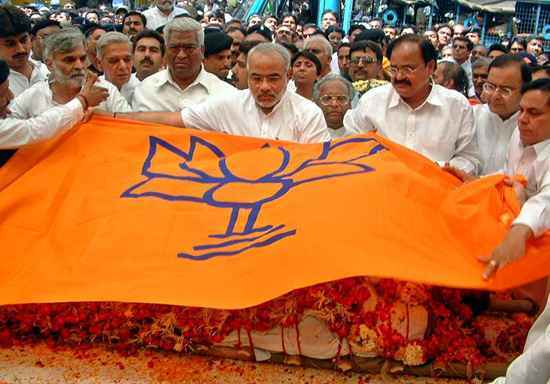 Former DIG, D.G. Vanzara also hinted at a political conspiracy behind Pandya’s killing during an interrogation by the CBI while he talked about Sohrabuddin’s role in the death of Mr. Pandya [DG Vanzara sings about Haren Pandya murder, says it was political conspiracy: CBI].
Former DIG, D.G. Vanzara also hinted at a political conspiracy behind Pandya’s killing during an interrogation by the CBI while he talked about Sohrabuddin’s role in the death of Mr. Pandya [DG Vanzara sings about Haren Pandya murder, says it was political conspiracy: CBI].
In his 10-page resignation letter dated 01-09-2013 (September 1, 2013) from the Sabarmati Central Prison, Ahmedabad, suspended DIG D.G. Vanzara said:
“I most respectfully would like to submit and state that I, along with my officers, stood beside this government like a bulwark whenever it faced existential crisis in the past. When I, along with my officers have been facing a similar crisis in my/our life/lives, it was expected of this government to reciprocate and firmly stand beside me and my officers with a similar vigour and determination, which to my utter shock and surprise, could not happen.”
He also talks about his ‘silence’ about something:
“Accordingly, this government instead of construing my ‘dignified silence’ to be a ‘virtue’ worth rewarding has mistaken the same to be my ‘weakness’ worth ignoring.”
And then he comes out clear against the government and states:
“Gujarat CID/Union CBI had arrested me and my officers in different encounter cases holding us to be responsible for carrying out alleged fake encounters, if that is true, then the CBI Investigating officers of all the four encounter cases of Shohrabuddin, Tulasiram, Sadique Jamal and Isharat Jahan have to arrest the policy formulators also as we, being field officers, have simply implemented the conscious policy of this government which was inspiring, guiding and monitoring our actions from the very close quarters. By this reasoning, I am of the firm opinion that the place of this government, instead of being in Gandhinagar, should either be in Taloja Central Prison at Navi Mumbai or in Sabarmati Central Prison at Ahmedabad.”
However, he makes it plain that his love for Mr. Modi remains intact, but he talks about his ‘silence’ once more:
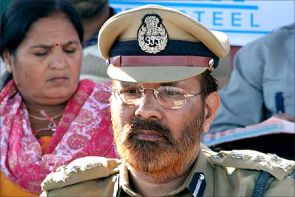 “Let me also further put on record and clarify my stand that I have been maintaining my graceful silence for such a long period only and only because of my supreme faith in and highest respect for Shri Narendrabhai Modi, Hon’ble Chief Minister of Gujarat, whom I used to adore like a God. But, I am sorry to state that my God could not rise to the occasion under the evil influence of Shri Amitbhai Shah who usurped his eyes and ears and has been successfully misguiding him by converting goats into dogs and dogs into goats since last 12 years.”
“Let me also further put on record and clarify my stand that I have been maintaining my graceful silence for such a long period only and only because of my supreme faith in and highest respect for Shri Narendrabhai Modi, Hon’ble Chief Minister of Gujarat, whom I used to adore like a God. But, I am sorry to state that my God could not rise to the occasion under the evil influence of Shri Amitbhai Shah who usurped his eyes and ears and has been successfully misguiding him by converting goats into dogs and dogs into goats since last 12 years.”
Later, Senior Advocate, Mr. K.T.S. Tulsi, appearing for the Government of Gujarat, submitted before the Supreme Court that the Sohrabuddin and his wife, Kausar Bi, had been killed in a staged encounter citing the findings of the investigation. [Gujarat says missing wife killed; The journalist who cracked Gujarat fake encounter case]. Tulsiram Prajapati was a witness to the staged encounter of Sohrabuddin and was eliminated in another fake encounter, as per the findings of the CBI, in connection with which Mr. Amit Shah was questioned by the CBI, arrested and later released on bail, and questioned a second time by the CBI. [CBI to question Amit Shah again in Prajapati case]. Mr. Shah was accused of masterminding the fake encounters.
In his resignation letter, Vanzara talks about Jehadi Terrorism, talks about the encounters he was behind the bars for, hints at Pandya’s murder being a ‘political conspiracy’ and also talks about his ‘silence’ several times over and connects his silence with “supreme faith” in and “highest respect” for the then incumbent Chief Minister of Gujarat, Mr. Modi. Add to this what DGP R.B. Shreekumar, the Additional Director General (Intelligence), told India Today regarding Mr. Pandya not being on the hit list of terrorists. Hence, one might reasonably infer that in getting Mr. Pandya killed, Sohrabuddin was not acting as a Jehadi terrorist, but, perhaps, as a contract killer. However, building any further from here would be mere speculation. So, let’s leave it here and move to the aftermath of the Godhra incident.
THE RIOTS AND THE STATE RESPONSE
As noted above, it is reasonable to expect the state to respond quickly after the Godhra incident, for the riots are a very real possibility in such circumstances, and in view of the past communal riots, the state had absolutely no reason to be overly optimistic.
The Vishwa Hindu Parishad called for a statewide bandh (shut-down) for February 28, which was endorsed by the government through a press note issued at 8 p.m. on February 27, which the VHP/Bajrang Dal saw as the endorsement of its stand.
A report titled ‘When guardians of Gujarat gave 24-hour license for punitive action‘ notes:
“The formal decision of the BJP to support the bandh call was announced through a press note issued around 8 pm. The VHP/Bajrang Dal took that as an endorsement of its stand. The BJP did agonise over the decision to support the bandh call chiefly because the state police intelligence chief, additional director-general of police G.C. Raigar, had warned of its consequences.”
The connection between the police inaction during the riots and the government support for the Bandh was noted by report published on March 03, 2002 in The Hindu titled ‘Saffronised police show their colour‘:
“The police may not have demonstrated such impotency without a tacit approval from above which they received from the ruling party extending support to the bandh call. In such a situation, the police would always be hesitant to act lest it hurt the interests of the political bosses. And the saffronised police also found a common cause with the criminals to ‘punish’ the minorities.
Insiders in the BJP admit that the police were under instructions from the Narendra Modi administration not to act firmly; apparently he wanted to please his RSS and VHP brethren in return for the help he received from the saffron brigade to acquire the top post and win the Rajkot-II Assembly byelection despite heavy odds.”
The same report further notes that Mr. Modi, even risking criticism, tried to “virtually ‘justify’ the vandalism on the bandh day as the “natural outpour of anguish of the people” for the “terrorist-type pre-planned attack” on the “Ram sevaks”‘ in the Sabarmati Express.”
Another report titled ‘Godhra incident godsend for Modi‘ quotes Mr. Modi as saying on February 28, 2002, “I am absolutely satisfied with how the police and government handled the backlash… I am happy that violence has largely been contained…”. The report further quotes Mr. Modi: “The five crore (fifty million) people of Gujarat have shown remarkable restraint under grave provocation.”
The Human Right Watch report on Gujarat 2002 riots titled scathingly as “WE HAVE NO ORDERS TO SAVE YOU” [April 2002, Vol. 14, No. 3 (C)] notes:
“Starting on the morning of February 28, Hindu mobs unleashed a coordinated attack against Muslims in many of Gujarat’s towns and cities. Despite the state’s claims that police were simply overwhelmed by the sheer size of the Hindu mobs—often numbering in the thousands—evidence collected by the media, Indian human rights groups, and Human Rights Watch all point to state sponsorship of the attacks. Eyewitness accounts cited throughout this report, as well as the history of police and political recruitment demonstrate the state’s partisan role.”
 Regarding the measures taken to bring violence under control, the report observes:
Regarding the measures taken to bring violence under control, the report observes:
“After allowing thirty-six hours to pass without any serious intervention, the first of several contingents of army troops were deployed into Ahmedabad, Rajkot, and Vadodara on March 1. Many had to be flown in from reserves’ stations in south Indian as the bulk of Indian forces are stationed along the India -Pakistan border. Though the army arrived in Gujarat soon after the Godhra carnage, the state government refused to deploy the soldiers until twenty-fours hours after they arrived and only once the worst violence had ended.”
The report further observes:
“In Ahmedabad, Gujarat’s commercial capital and the site of Human Rights Watch’s investigations, many attacks took place within view of police posts and police stations. Human Rights Watch viewed several policeposts less than fifty feet from the site of burnt Muslim-owned restaurants, places of businesses, and hotels in Ahmedabad. Without exception, the Hindu-owned establishments neighboring the destroyed structures were unscathed. The same pattern was observed by India’s National Human Rights Commission during its fact-finding mission in March.”
So, no, the riots were not exactly Hindu-Muslim communal clashes, as Ms. Tavleen Singh would want us to believe, but were nothing short an organized massacre of the people belonging to a single community, and for that reason they are called a ‘pogrom’, much like the 1984 anti-Sikh riots.
Police participation did not stop at letting the rioters do the rioting. The report notes:
“Press reports and eyewitness testimonies, including those collected by Human Rights Watch, abound with stories of police participation and complicity in the attacks. Their crimes range from inaction to direct participation in the looting and burning of Muslim shops, restaurants, hotels, homes, and the killing of Muslim residents. Worse still, officers who tried to keep the peace or act against murderous mobs have been transferred or have faced the wrath of their superiors.”
Suffice it to say that there is overwhelming evidence of state complicity in the riots, but to hold anybody individually responsible requires direct evidence linking the person to the crime, which is missing for obvious reasons. To get sufficient evidence against anybody in power is nearly impossible. In this respect, Mr. Ashok Narayan, who was Home Secretary during the Gujarat 2002 riots and testified before the Nanavati-Shah Commission in connection with the 2002 riots, told Rana Ayyub, the undercover Investigative Journalist, as follows:
“Q) Who will take action against the ministers?
A) Let me tell you, I was the Vigilance Commissioner post the Home Secretary position. You know there is the Lokayukta in every state which looks for the ministers. So one day I go; now honestly AC kamron mein makkhiyan nahi hota, warna I could have used the word ki woh makkhiyan maar rahe the. So I asked what is happening?
They said sir, what to do. Nobody complains about ministers. When people are not willing to take on ministers in cases of bribery and corruption, how will they gather courage to [go] against ministers involved in riots. Kiski shaamat aayi hai.
Unless they come forward. And they are so smart they will make the conversation so smartly on the phone — they will call up the officers and say, ‘Achcha take care of that area.’
Now a common meaning for a layman technically would be, ‘Take care that riots don’t take in that area’ but the real meaning is ‘take care that the riots take place in that area.’
They don’t do things themselves, there are agents and agents and agents.” [Ayyub, Rana, Gujarat Files: Anatomy of a Cover Up, 2016, ISBN: 978-1-943438-88-4, p. 87-88]
AFTER THE RIOTS
Mr. Modi has consistently maintained that all went down well in Gujarat during the 2002 riots. In Becharaji, during his Gujarat Gaurav Yatra, in his infamous Hum paanch, Hamare Pachees speech, which the National Commission for Minorities (NCM) demanded a text of for its apparently inflammatory content, Mr. Modi said on September 9, 2002:
“The Congress also accuses me of bringing the Narmada waters to the Sabarmati river in the month of Shravan. But the dam has already been built… I want to ask the Congress, why do you object if people on the banks of the Sabarmati derive spiritual peace through the Narmada waters brought in the month of Shravan?
When you come to power, you are free to bring water during Ramzan. When we allocate funds for Becharaji, they do not like it. And if we bring Narmada waters in the month of Shravan, then too they say they dislike it. So what should we do? Do we go and run relief camps? Should we open child producing centres?
We want to firmly implement family planning. Hum paanch, humare pachees (We five, our 25) (laughs). Who will benefit from this development? Is family planning not necessary in Gujarat? Where does religion come in its way? Where does community come in its way?”
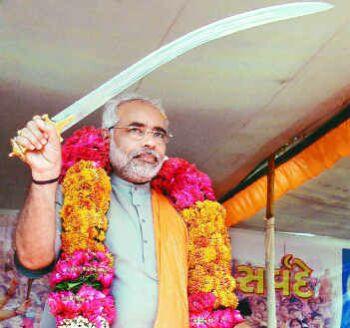 Why is the Chief Minister of Gujarat — the whole of Gujarat — addressing one community against another community? Why does it have to be Congress to bring Narmada waters during Ramzan? Why can’t the Chief Minister of Gujarat bring “Narmada waters to the Sabarmati river” during the month of Shravan as well as during Ramzan? And why is the issue of ‘family planning’ being used as a stick to beat the minority community with? Population control is not a new issue and could easily be talked about without resorting to community bashing, had the intention been to address the problem. But in September 2002, having already resigned in July 2002, Mr. Modi was not speaking as the Chief Minister of Gujarat, but as BJP’s Chief Ministerial candidate for Gujarat. The 2002 Gujarat elections were conducted without much delay despite a difference of opinion within the government officials regarding the suitability of the political atmosphere for a free and fair elections without untoward incident. The government wanted early elections, and it is reasonable to believe that the ruling party thought that early elections were in their interest and they could be better rewarded for their past performance in the communally charged atmosphere. The move could have backfired, like a similar manoeuvre did in 1977.
Why is the Chief Minister of Gujarat — the whole of Gujarat — addressing one community against another community? Why does it have to be Congress to bring Narmada waters during Ramzan? Why can’t the Chief Minister of Gujarat bring “Narmada waters to the Sabarmati river” during the month of Shravan as well as during Ramzan? And why is the issue of ‘family planning’ being used as a stick to beat the minority community with? Population control is not a new issue and could easily be talked about without resorting to community bashing, had the intention been to address the problem. But in September 2002, having already resigned in July 2002, Mr. Modi was not speaking as the Chief Minister of Gujarat, but as BJP’s Chief Ministerial candidate for Gujarat. The 2002 Gujarat elections were conducted without much delay despite a difference of opinion within the government officials regarding the suitability of the political atmosphere for a free and fair elections without untoward incident. The government wanted early elections, and it is reasonable to believe that the ruling party thought that early elections were in their interest and they could be better rewarded for their past performance in the communally charged atmosphere. The move could have backfired, like a similar manoeuvre did in 1977.
What was done during this time by the government to ease the situation and make the environment conducive for the election is reflected in the well guarded statement of Mr. Ashok Narayan, the Home Secretary during the time of the riots, recorded on December 13, 2009 by the Special Investigation Team (SIT) investigating the matter. Here is a question and the response by Mr. Narayan:
Que. Please see a copy of the D.O. letter dated 22-4-2002 addressed to you by Shri P.C. Pande, the then CP, Ahmedabad to you with a copy to DGP and ADG (Int.). What action was taken by you on the said letter?
Ans. I have gone through the. D.O. letter and I recollect having discussed the issues raised by Shri P.C. Pande, the then CP in his letter with the DGP as well as the CM. I emphasized upon the CM to prevail upon or use his good offices on the Sangh Parivar activists including VHP and Bajrang Dal to restrain them from indulging in such activities. However, the CM was non-committal and used to make public statements in a general manner that the State Govt. was committed to the safety and security of all the citizens living in Gujarat. I don’t recollect having put up these references in file.
In July 2002, a Rath Yatra was proposed, and Gujarat was reeling under the aftermath of the riots. In such a situation a Rath Yatra, which had to be a political grandstanding of a certain kind, could be detrimental to the peace and order. A report on law and order situation was called in. Mr. R.B. Sreekumar, the then Additional Director General (Intelligence), submitted the report. This is what Mr. Narayan told about the report to the SIT:
“This law & order assessment report was called for in view of the Rath-Yatra which was likely to be held some time in July, 2002. Shri R. B. Sreekumar, the then Addl DG (Int.) was of the view that on the various grounds mentioned by him in his letter, the Rath-Yatra should not be taken out in the near future till an atmosphere of durable peace and goodwill between the majority and minority community was established. On receipt of this report, the matter was discussed by me with the CM, who was of the view that the Rath-Yatra could not have been stopped simply on the grounds mentioned by ADG (Int.) in his letter and that the police should make fool proof bandobast so that no untoward incident took place. Accordingly, the administration did not agree with the views of ADG (Int.) and Rath-Yatra was taken out in the year 2002 under police bandobast, and no untoward incident took place anywhere.”
One might wonder why was the Rath Yatra so important that even the apprehension of a law and order situation and the possibility of violence communicated by no less than the ADG (Intelligence) in his official report was paid no heed to.
Even as late as in August 2002, things had not calmed down enough for a free and fair election, which is why the early elections that the Gujarat government wanted were also a source of disagreement among the officials. Mr. Narayan was questioned about that, too, by the SIT. Mr. Narayan said:
On 9-8-2002, Shri J.M. Lyngdoh, the then Chief Election Commission and the other two Election Commissioner Members held a meeting in order to assess the law & order situation in Gujarat to decide to pre-pone the election in the State. This meeting was attended by Shri G. Subba Rao along with DGP, Shri K.R. Kaushik, the then CP, Ahmedabad, Shri C.K. Koshy, the then Principal Secretary, Revenue, Shri P.S. Shah, Addl. Secretary (Home), Shri R.B. Sreekkumar, Addl. DG (Int.), Shri K. Nityanandam, the then Secretary (Home) and myself. As instructed by Shri G. Subba Rao, the then Chief Secretary, Shri Nityanandam, the then Siporetary (Home) started his presentation but he was cut short by Shri Lyngdoh with the remarks that they were not interested in an elaborate presentation. Thereafter, I took over and assured the Commission that in case in the event of election being held in near future, the Govt. would be in a position to hold the same in a fair and free manner and the voter who wants to exercise his franchise shall be given due protection. DGP also gave his view point. In the meanwhile, Shri R.B. Sreekumar, the then ADG (Int.) intervened and told the Commission that he had a different view point on the subject. Shri R.B. Sreekumar, the then ADG (Int.) was of the view that the tension still prevailed in a large number of Talukas which had witnessed riots and that 154 Assembly Constituencies were affected. The Election Commission passed a detailed order on 16-8-2002 and differed with the views of the government. The Election Commission was of the considered view that it was not in a position to conduct a free and fair election in the State.
Mr. Sreekumar replied to a letter by Mr. Narayan, which finds mention in the statement of Mr. Narayan. Here is what Mr. Narayan tells about the letter:
“Shri Sreekumar replied to my letter dated 9-9-2002 in which he stated that there was a perceptional difference between the Home Department and the State IB in assessment of communal scenario at the relevant time in the State and that the Election Commission had observed that the appraisal of the communal situation by the State IB was in consonance with the inputs received by the Commission. I did not enter into any further correspondence with Shri Sreekumar as he had already been transferred.”
Perhaps, Mr. Sreekumar had become too much of an inconvenience during a crucial time, and his inputs were not really doing much good. Another interesting part of Mr. Narayan’s statement is regarding the calls he made during the riots. He says:
“Today, I have been shown the call details of the government mobile phone 9825037405 allotted to me by the Govt. of Gujarat from the period 27-2-2002 to 4-3-2002. At the out set, I may state that I don’t recollect any of the numbers called by me or the numbers from which the calls had been received.However, on 28-2-2002, I had made/received many calls from police officials as well as government officials mainly from CP, Ahmedabad City in connection with the ongoing riots in the City. I do not recollect the talks held with them at this stage. It may be added here that I had received several distress calls from the public on my landline phone as well as my mobile phone but I am unable to decipher the same.”
What Mr. Narayan says regarding the distress calls from Ahmedabad is interesting in the light of the fact that Mr. Narayan was the Home Secretary and received several distress calls on that day alone whereas Mr. P.C. Pande, who was the Commissioner of Police, Ahmedabad, says talking to Rana Ayyub:
Q) So, you were there during the riots?
A ) Yes, it was one of the most horrific times of my life. I had already seen 30 years of service. But look at this; there were riots in 85, 87, 89, 92 and most of the times the Hindus got a beating. And the Muslims got an upperhand. So this time in 2002, it had to happen, it was the retaliation of Hindus. Also post-1995, people felt that the government was theirs, especially because it was a BJP government. They say I did not reach people. Not a single person called me, I am not clairvoyant to figure who is calling me. [Ayyub, Rana, Gujarat Files: Anatomy of a Cover Up, 2016, ISBN: 978-1-943438-88-4, p. 132.]
So, while the Home Secretary, who is not directly involved in maintaining the law and order situation, gets several distress calls from Ahmedabad in a single day while the Commissioner of Police, Ahmedabad, was not called by “a single person” at any point of time during the entire ordeal? If the portion cited above does not make it clear as to why Mr. Pande takes that position of denial, perhaps what he says further might indicate better:
Q) So, Modi is the poster boy?
A) You know Mallika Sarabhai, that dancer, she is a big Modi basher. They say the riots of 2002 are because of him. He says I didn’t go and burn the train at Godhra. So if I didn’t do that, how can you blame me for whatever took place after that. If that had been done by me, this was also done by me. See, this was a reaction to what happened there. I mean if you see it logically, here is a group of Muslims going and setting fire on a train, so what will be your reaction?
Q) You hit them back?
A) Yes, yes, you hit them back, now this hitting back, you must have already done research that they [the Hindus] got a beating in 85, 86, 92 and so on, what happens, here is the chance, give it back to them…. Why should anybody mind it? [Ayyub, Rana, Gujarat Files: Anatomy of a Cover Up, 2016, ISBN: 978-1-943438-88-4, p. 132-133.]
The former Commissioner of Police, Ahmedabad, Gujarat, goes further:
Q) But see, Modi was made Modi by the riots right?
A) Yes, before that who knew him? Who was Modi? He came from Delhi, before that Himachal. He was in charge of the unimportant states, neither Haryana nor Himachal.
Q) This was like trump card, no?
A) That’s what…. if this had not happened, he would not have been known internationally. That gave such a push, although negative, at least he became known.
Q) So, are you like his man?
A) I mean yes, considering I was there with him during the 2002 riots so it’s OK. [Ayyub, Rana, Gujarat Files: Anatomy of a Cover Up, 2016, ISBN: 978-1-943438-88-4, p. 146.]
However, there is no evidence that at any point of time Mr. Modi gave any illegal order to any state official. In this regard, Mr. K. Chakravarty, who was the Director General of Police (DGP), Gujarat, during the 2002 riots says:
Q) Did he give the order not on act?
A) They didn’t give any illegal orders to me. He won’t sign his death warrant.
Q) Order can be given invisibly?
A) It will be on a one-on-one basis, not in front of 20 people out of which 5 may be against you. [Ayyub, Rana, Gujarat Files: Anatomy of a Cover Up, 2016, ISBN: 978-1-943438-88-4, p. 158.]
What Mr. Chakravarty says is very much in line with what Mr. Narayan said (quoted earlier) regarding the way order might be handed down without compromising plausible deniability. However, in absence of positive evidence, it is unsafe and irresponsible to say that Mr. Modi issued any illegal orders, but that absolves him only of personal legal liability, which brings us to the much talked about (mostly by Mr. Modi himself) ‘Clean Chit’.
THE CLEAN CHIT
When so many people die under one’s watch, one is likely to feel regretful no matter how much and how sincerely one tried to save lives. Not Mr. Modi. He has no regrets.
“India’s Supreme Court is considered a good court today in the world. The Supreme Court created a Special Investigation Team and topmost, very bright officers who oversee the SIT. That report came. In that report, I was given a thoroughly clean chit, a thoroughly clean chit.” [No guilty feeling about Gujarat riots, says Modi].
Mr. Modi condescendingly says that the Supreme Court of India “is considered a good court in the world” like the Supreme Court was Sania Mirza on the rise and needed Mr. Modi’s gracious approval of its achievements. The “thoroughly clean chit”, as I have pointed out earlier, is simply regarding his direct personal involvement in any wrongdoing at the hands of the state functionaries during the riot. So, it absolves him of only personal legal responsibility, which was never really the central issue because hardly anybody believed that Mr. Modi had personally hurt someone or had issued direct orders to any state functionary to cause harm to anyone. However, the “thoroughly clean chit” is not quite as clean as Mr. Modi would want us to believe, for it does not fail to take note of more than a few “questionable” acts and omissions. Some of such stinging observations in the 600-page long report as reported by Tehelka [Here’s the smoking gun. So how come the SIT is looking the other way?] are:
- “In spite of the fact that ghastly and violent attacks had taken place on Muslims at Gulberg Society and elsewhere, the reaction of the government was not the type that would have been expected by anyone. The chief minister had tried to water down the seriousness of the situation at Gulberg Society, Naroda Patiya and other places by saying that every action has an equal and opposite reaction.” (p. 69)
- “The Gujarat government has reportedly destroyed the police wireless communication of the period pertaining to the riots… No records, documentations or minutes of the crucial law and order meetings held by the government during the riots had been kept.” (p. 13).
- “It appears that the political affiliation of the advocates did weigh with the government for the appointment of public prosecutors.” (Page 77).
- “As many as 32 allegations were probed into during this preliminary inquiry. These related to several acts of omission and commission by the state government and its functionaries, including the chief minister. A few of these alone were in fact substantiated… the substantiated allegations did not throw up material that would justify further action under the law.” (Concluding remarks by SIT Chairman, R.K. Raghavan).
- “His (Modi) implied justification of the killings of innocent members of the minority community read together with an absence of a strong condemnation of the violence that followed Godhra suggest a partisan stance at a critical juncture when the state had been badly disturbed by communal violence.” (p. 153).
- “…discriminatory attitude by not visiting the riot-affected areas in Ahmedabad where a large number of Muslims were killed, though he went to Godhra on the same day, travelling almost 300 km on a single day (p. 67)… Modi did not cite any specific reasons why he did not visit the affected areas in Ahmedabad city as promptly as he did in the case of the Godhra train carnage.” (Page 8 of chairman’s comments).
Interestingly, in his statement dated March 27-28, 2010 before the Gujarat SIT that investigated the 2002 riots, Mr. Modi said:
Q.20. What were the discussions held in the said meeting of 27.02.2002 night? Please give an exact account of the views and suggestions given by each participant?
Ans. in the meeting, I shared information about my visit to Godhra. The officers present briefed me about the precautionary measures taken by them. I issued instructions to them to take all possible steps to maintain Law & Order and peace. I also asked ACS (Home) to make inquiry in the local Army headquarter about the availability of Army personnel. I asked them to seek assistance for additional force from neighboring states. I instructed the officials of Home Department and police to make necessary bandobast to avoid untoward incident. It may be added here that by that time I had been informed about the Gujarat bandh call given by the VHP on 28-2-2002.
 However, Tehelka reports that the report of the SIT appointed by the Supreme Court says that in an inexplicable move, the police administration did not impose curfew in Naroda until 12 pm and Meghani Nagar (Ahmedabad city) until 2 pm on February 28, 2002. By then, the situation had severely deteriorated at both places. [Here’s the smoking gun. So how come the SIT is looking the other way?]. As stated earlier, considering the hisotry of communal violence in Gujarat, the curfew should have been clamped on February 27, 2002 itself immediately after the Godhra incident, which occurred in the morning. How hard was it to see the potential of the incident to spark communal violence? But the efficient Modi government failed to swing into action quickly enough, and the report takes clear and careful note of it.
However, Tehelka reports that the report of the SIT appointed by the Supreme Court says that in an inexplicable move, the police administration did not impose curfew in Naroda until 12 pm and Meghani Nagar (Ahmedabad city) until 2 pm on February 28, 2002. By then, the situation had severely deteriorated at both places. [Here’s the smoking gun. So how come the SIT is looking the other way?]. As stated earlier, considering the hisotry of communal violence in Gujarat, the curfew should have been clamped on February 27, 2002 itself immediately after the Godhra incident, which occurred in the morning. How hard was it to see the potential of the incident to spark communal violence? But the efficient Modi government failed to swing into action quickly enough, and the report takes clear and careful note of it.
Quite clearly, so far as the ‘clean chit’ by the SIT is concerned, it is confined to the direct personal involvement of Mr. Modi in any wrongdoing during the riots. However, the SIT report does not quite say that Mr. Modi acted in a non-partisan fashion, as he should have, as the Chief Minister of Gujarat.
DEMONIZATION OF MODI?
Ms. Tavleen Singh’s charge that there was some kind of demonization of Modi done by the Indian media after the 2002 riots and her attempt to play down the Gujarat massacre of 2002 could only be because either she has not looked at the hard facts or she is in deliberate denial, and that is precisely where the mistake of the ‘political pundits’ — among whom she places herself — lies. The media had nothing against Mr. Modi back in 2002 and the picture of Mr. Modi that the media portrayed was exactly the picture that had emerged from the facts of the situation. State complicity in both the 1984 pogrom and the 2002 riots has not been completely ruled out, regardless of the thoroughness or the cleanness of any ‘clean chit’.
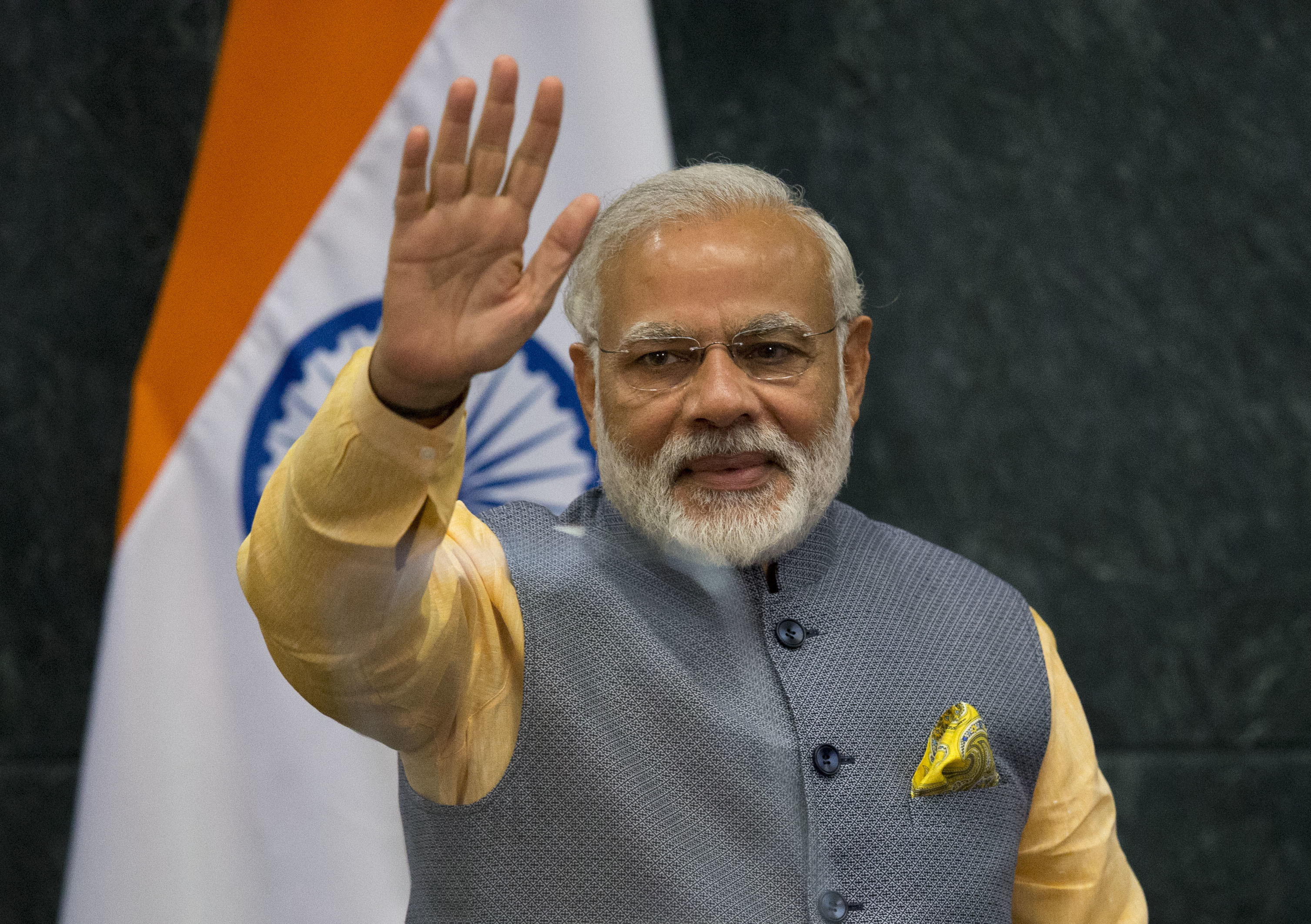 Ms. Singh notes in her article, “The problem also is that most political pundits continue to believe their own myth-making.” Precisely. That there was some kind of deliberate demonization of Mr. Modi is one such myth that political pundits like Ms. Singh desperately want to believe, and want to make others believe. The fact is that Mr. Modi was never demonized, but he has certainly been angelized and deified in the recent times. Pankaj Mishra was stating the dark but undeniable truth with chilling precision when he wrote way back in 2012:
Ms. Singh notes in her article, “The problem also is that most political pundits continue to believe their own myth-making.” Precisely. That there was some kind of deliberate demonization of Mr. Modi is one such myth that political pundits like Ms. Singh desperately want to believe, and want to make others believe. The fact is that Mr. Modi was never demonized, but he has certainly been angelized and deified in the recent times. Pankaj Mishra was stating the dark but undeniable truth with chilling precision when he wrote way back in 2012:
“Like Modi, the strongmen who supervise these bloody purges of economically depressed and unproductive people are often elected by landslide majorities, and tend to be audacious free-marketeers rather than hopeless socialists. The start of the crony-capitalist regimes of Thaksin in Thailand and Putin in Chechnya coincided with vicious assaults on ethnic minorities. Ten years later, the 2002 anti-Muslim pogrom too seems to have been a necessary blood rite – anointing not just Vibrant Gujarat but also the New India.” [The Gujarat massacre: New India’s blood rite, March 14, 2012]
Indians might choose, for better or worse, to forgive and forget, but the truth, by its very nature, allows no opting out.
 People did not come to their balconies clapping and clanking because they were grateful (they kept expelling healthcare workers from their rented accommodations fearing infection long after the pointless exercise) but because they wanted to display the support for the Prime Minister by responding to the call. It was not about supporting the nation (donate, if you want to lend real support) or even the government in dealing with the crisis (staying indoors was and is the effective support, which was separately called for anyway) but about displaying support for the Prime Minister, which makes it a political exercise, pure and simple.
People did not come to their balconies clapping and clanking because they were grateful (they kept expelling healthcare workers from their rented accommodations fearing infection long after the pointless exercise) but because they wanted to display the support for the Prime Minister by responding to the call. It was not about supporting the nation (donate, if you want to lend real support) or even the government in dealing with the crisis (staying indoors was and is the effective support, which was separately called for anyway) but about displaying support for the Prime Minister, which makes it a political exercise, pure and simple.  But if it was merely a display and could not amount to much in terms of dealing with the health crises we are facing, was the Prime Minister misinformed, uninformed or simply under a misconception of some sort when he called for the display? None of that.
But if it was merely a display and could not amount to much in terms of dealing with the health crises we are facing, was the Prime Minister misinformed, uninformed or simply under a misconception of some sort when he called for the display? None of that. 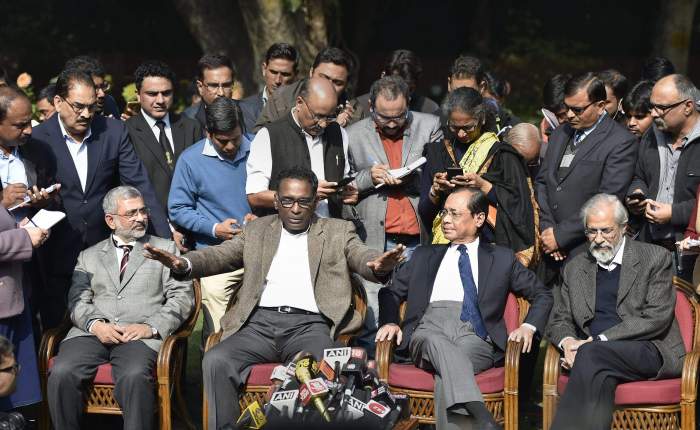
 9. A Judge is expected to let his judgments speak for themselves. He shall not give interview to the media.
9. A Judge is expected to let his judgments speak for themselves. He shall not give interview to the media. 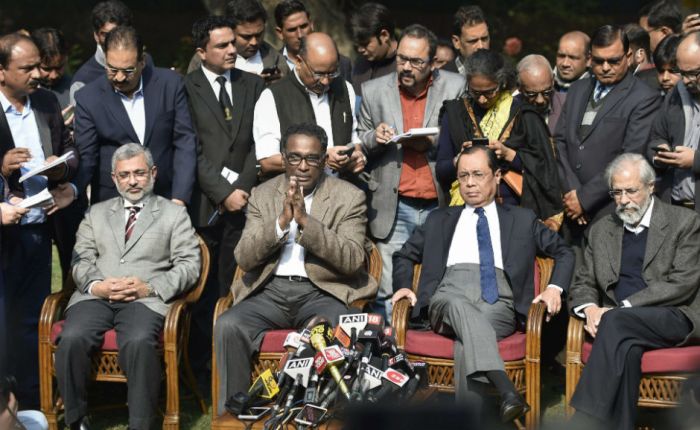
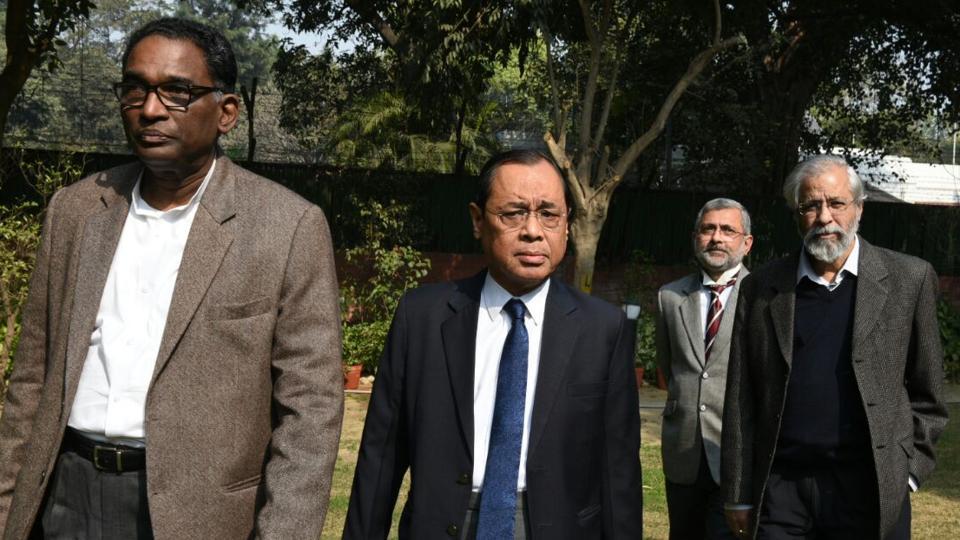 Judicial independence — it might be pertinent to add here — was not presented to us on a platter and was won only after several hard-fought battles over the past many decades, and, among other things, gave us the present collegium system, which, despite all its flaws, is far better than the Executive deciding which judges be rewarded and which other punished for their judicial verdicts. If the four senior judges of the Supreme Court, in their wisdom, thought it fit to address a press conference and thereby risk judicial independence, the reason must be quite worrisome, and I do hope that it was indeed worth the risk. However, the larger question remains as to what is sought to be achieved by the step and at what cost? What good is a remedy that is far more harmful than the problem itself?
Judicial independence — it might be pertinent to add here — was not presented to us on a platter and was won only after several hard-fought battles over the past many decades, and, among other things, gave us the present collegium system, which, despite all its flaws, is far better than the Executive deciding which judges be rewarded and which other punished for their judicial verdicts. If the four senior judges of the Supreme Court, in their wisdom, thought it fit to address a press conference and thereby risk judicial independence, the reason must be quite worrisome, and I do hope that it was indeed worth the risk. However, the larger question remains as to what is sought to be achieved by the step and at what cost? What good is a remedy that is far more harmful than the problem itself?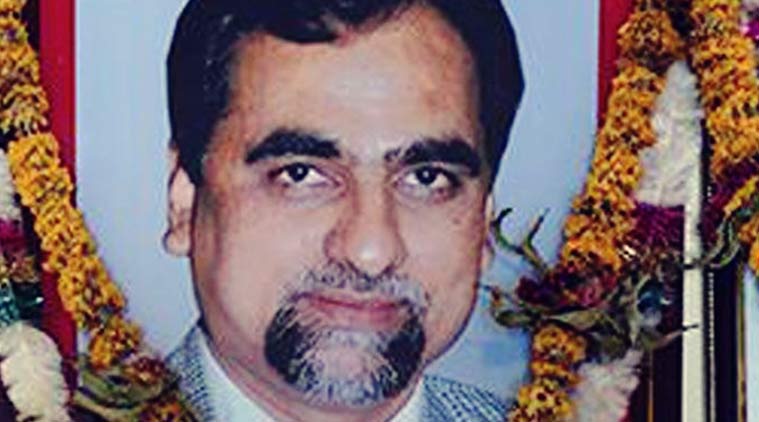 This case is a very different can of worms, and Justice Gogoi’s confirmation that the assignment of this case was an issue read with the contents and in context of the letter to the CJI disclosed at the press conference, gives the controversy much grimmer and rather disturbing undertones, and for that reason I would refrain from saying anything further in this regard, for it is too serious a matter to allow for careless speculation.
This case is a very different can of worms, and Justice Gogoi’s confirmation that the assignment of this case was an issue read with the contents and in context of the letter to the CJI disclosed at the press conference, gives the controversy much grimmer and rather disturbing undertones, and for that reason I would refrain from saying anything further in this regard, for it is too serious a matter to allow for careless speculation.
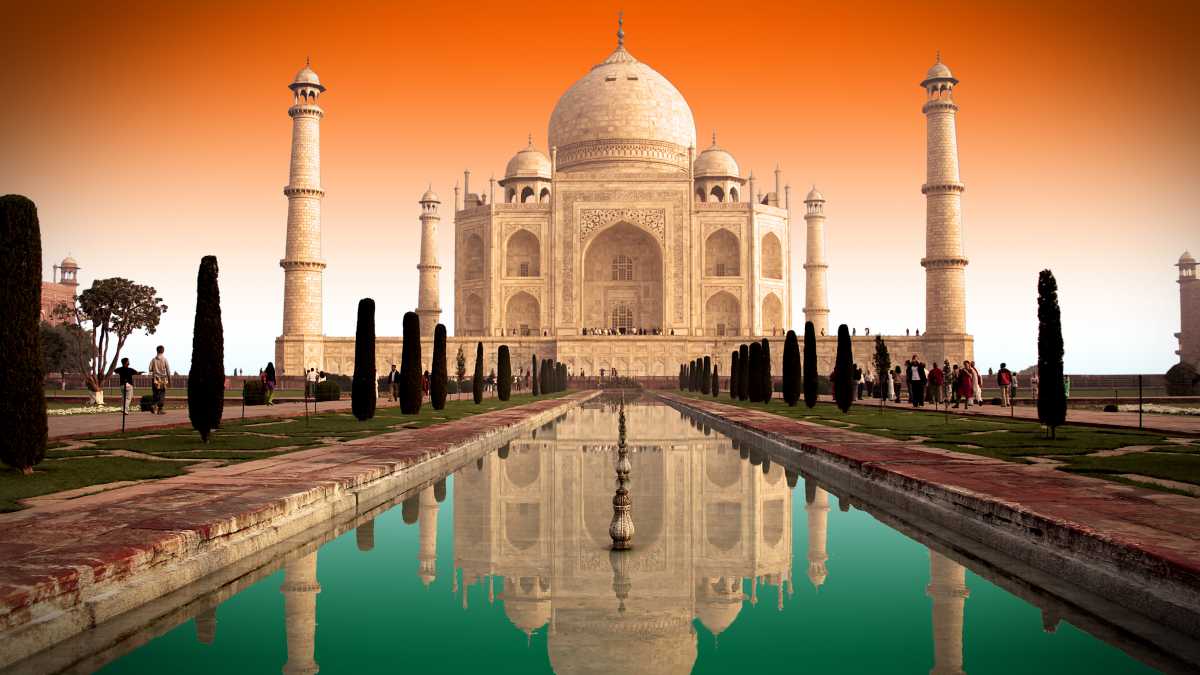 “Where the HELL is LOVE here, some one please explain!!!”
“Where the HELL is LOVE here, some one please explain!!!” A good number of motivational speakers across the world have used the tale of eagle’s rebirth to inspire loads of people. According to the story, generally told through a PowerPoint presentation, eagle is the most long living bird with a lifespan of around 50 years. But when it crosses 20 years of age, its beak gets ‘bent’, its ‘flexible’ talons are no longer effective and its wings get stuck to its chest from the weight of its heavy feathers making it difficult to fly. This leaves eagle with only two choice — to die or to go through “a painful process of change that lasts 60 days”.
A good number of motivational speakers across the world have used the tale of eagle’s rebirth to inspire loads of people. According to the story, generally told through a PowerPoint presentation, eagle is the most long living bird with a lifespan of around 50 years. But when it crosses 20 years of age, its beak gets ‘bent’, its ‘flexible’ talons are no longer effective and its wings get stuck to its chest from the weight of its heavy feathers making it difficult to fly. This leaves eagle with only two choice — to die or to go through “a painful process of change that lasts 60 days”. I never knew that my not downloading or using Snapchat would be so wonderfully and so convincingly explained by none other than
I never knew that my not downloading or using Snapchat would be so wonderfully and so convincingly explained by none other than 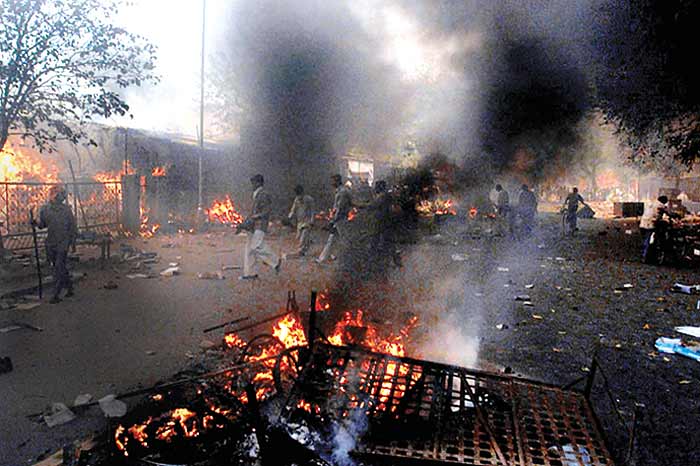 A journalist’s primary allegiance is to the truth and not to a person, ideology or cause, and Ms. Singh, who is a journalist, and who, by her own candid admission, is also one of the political pundits, fails to watch her step when she glides over the boundary of basic decency to trivialize communal violence like it was no big deal simply because we have failed to do anything about the riots that keep erupting every now and then. Ms. Singh says:
A journalist’s primary allegiance is to the truth and not to a person, ideology or cause, and Ms. Singh, who is a journalist, and who, by her own candid admission, is also one of the political pundits, fails to watch her step when she glides over the boundary of basic decency to trivialize communal violence like it was no big deal simply because we have failed to do anything about the riots that keep erupting every now and then. Ms. Singh says: Tavleen Singh’s widely shared opinion piece in the Indian Express titled
Tavleen Singh’s widely shared opinion piece in the Indian Express titled  If Ms. Singh wishes to bring the Godhra incident into the picture for her purposes, it doesn’t work either because Godhra incident was a trigger and was not part of what is called the ‘Gujarat 2002 pogrom’ or simply ‘Gujarat 2002’, which is also because it was not a case of communal rioting at all, but was found to be a well thought out conspiracy, for which
If Ms. Singh wishes to bring the Godhra incident into the picture for her purposes, it doesn’t work either because Godhra incident was a trigger and was not part of what is called the ‘Gujarat 2002 pogrom’ or simply ‘Gujarat 2002’, which is also because it was not a case of communal rioting at all, but was found to be a well thought out conspiracy, for which  Haren Pandya, the then Revenue Minister in the Narendra Modi government, told Outlook (June 3, 2002) that Mr. Modi had a meeting on the night of February 27, 2002, at his official bungalow in which he specifically instructed bureaucrats and senior police officers, including Ahmedabad police commissioner P.C. Pande, to allow “people to vent their frustration and not come in the way of the Hindu backlash” [
Haren Pandya, the then Revenue Minister in the Narendra Modi government, told Outlook (June 3, 2002) that Mr. Modi had a meeting on the night of February 27, 2002, at his official bungalow in which he specifically instructed bureaucrats and senior police officers, including Ahmedabad police commissioner P.C. Pande, to allow “people to vent their frustration and not come in the way of the Hindu backlash” [ Former DIG, D.G. Vanzara also hinted at a political conspiracy behind Pandya’s killing during an interrogation by the CBI while he talked about Sohrabuddin’s role in the death of Mr. Pandya [
Former DIG, D.G. Vanzara also hinted at a political conspiracy behind Pandya’s killing during an interrogation by the CBI while he talked about Sohrabuddin’s role in the death of Mr. Pandya [ “Let me also further put on record and clarify my stand that I have been maintaining my graceful silence for such a long period only and only because of my supreme faith in and highest respect for Shri Narendrabhai Modi, Hon’ble Chief Minister of Gujarat, whom I used to adore like a God. But, I am sorry to state that my God could not rise to the occasion under the evil influence of Shri Amitbhai Shah who usurped his eyes and ears and has been successfully misguiding him by converting goats into dogs and dogs into goats since last 12 years.”
“Let me also further put on record and clarify my stand that I have been maintaining my graceful silence for such a long period only and only because of my supreme faith in and highest respect for Shri Narendrabhai Modi, Hon’ble Chief Minister of Gujarat, whom I used to adore like a God. But, I am sorry to state that my God could not rise to the occasion under the evil influence of Shri Amitbhai Shah who usurped his eyes and ears and has been successfully misguiding him by converting goats into dogs and dogs into goats since last 12 years.” Regarding the measures taken to bring violence under control, the report observes:
Regarding the measures taken to bring violence under control, the report observes: Why is the Chief Minister of Gujarat — the whole of Gujarat — addressing one community against another community? Why does it have to be Congress to bring Narmada waters during Ramzan? Why can’t the Chief Minister of Gujarat bring “Narmada waters to the Sabarmati river” during the month of Shravan as well as during Ramzan? And why is the issue of ‘family planning’ being used as a stick to beat the minority community with? Population control is not a new issue and could easily be talked about without resorting to community bashing, had the intention been to address the problem. But in September 2002, having already resigned in July 2002, Mr. Modi was not speaking as the Chief Minister of Gujarat, but as BJP’s Chief Ministerial candidate for Gujarat. The 2002 Gujarat elections were conducted without much delay despite a difference of opinion within the government officials regarding the suitability of the political atmosphere for a free and fair elections without untoward incident. The government wanted early elections, and it is reasonable to believe that the ruling party thought that early elections were in their interest and they could be better rewarded for their past performance in the communally charged atmosphere. The move could have backfired, like a similar manoeuvre did in 1977.
Why is the Chief Minister of Gujarat — the whole of Gujarat — addressing one community against another community? Why does it have to be Congress to bring Narmada waters during Ramzan? Why can’t the Chief Minister of Gujarat bring “Narmada waters to the Sabarmati river” during the month of Shravan as well as during Ramzan? And why is the issue of ‘family planning’ being used as a stick to beat the minority community with? Population control is not a new issue and could easily be talked about without resorting to community bashing, had the intention been to address the problem. But in September 2002, having already resigned in July 2002, Mr. Modi was not speaking as the Chief Minister of Gujarat, but as BJP’s Chief Ministerial candidate for Gujarat. The 2002 Gujarat elections were conducted without much delay despite a difference of opinion within the government officials regarding the suitability of the political atmosphere for a free and fair elections without untoward incident. The government wanted early elections, and it is reasonable to believe that the ruling party thought that early elections were in their interest and they could be better rewarded for their past performance in the communally charged atmosphere. The move could have backfired, like a similar manoeuvre did in 1977. However, Tehelka reports that the report of the SIT appointed by the Supreme Court says that in an inexplicable move, the police administration did not impose curfew in Naroda until 12 pm and Meghani Nagar (Ahmedabad city) until 2 pm on February 28, 2002. By then, the situation had severely deteriorated at both places. [
However, Tehelka reports that the report of the SIT appointed by the Supreme Court says that in an inexplicable move, the police administration did not impose curfew in Naroda until 12 pm and Meghani Nagar (Ahmedabad city) until 2 pm on February 28, 2002. By then, the situation had severely deteriorated at both places. [ Ms. Singh notes in her article, “The problem also is that most political pundits continue to believe their own myth-making.” Precisely. That there was some kind of deliberate demonization of Mr. Modi is one such myth that political pundits like Ms. Singh desperately want to believe, and want to make others believe. The fact is that Mr. Modi was never demonized, but he has certainly been angelized and deified in the recent times. Pankaj Mishra was stating the dark but undeniable truth with chilling precision when he wrote way back in 2012:
Ms. Singh notes in her article, “The problem also is that most political pundits continue to believe their own myth-making.” Precisely. That there was some kind of deliberate demonization of Mr. Modi is one such myth that political pundits like Ms. Singh desperately want to believe, and want to make others believe. The fact is that Mr. Modi was never demonized, but he has certainly been angelized and deified in the recent times. Pankaj Mishra was stating the dark but undeniable truth with chilling precision when he wrote way back in 2012: